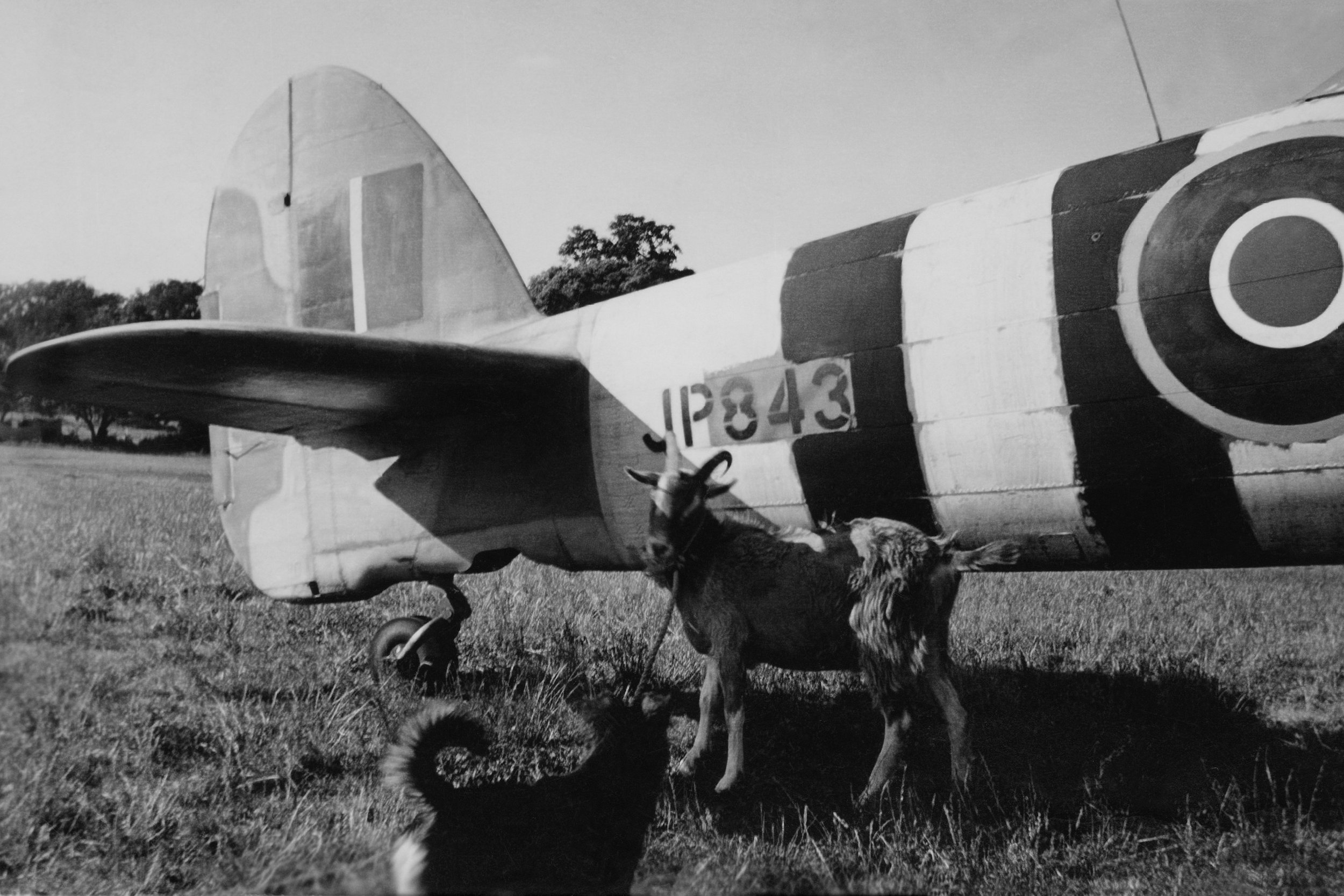JP 843 - a Brief overview
The history
in a nutshell
The story of JP843 begins in 1943, part of a batch of 600 Hawker Typhoons built by the Gloster Aircraft Company, a subsidiary of Hawker Aircraft. On September 22nd 1943, Typhoon JP843 entered active service with the Royal Air Force when it was delivered to No. 197 Squadron, operating out of RAF Tangmere in West Sussex, England. No. 197 Squadron was assigned to ground attack operations, and its base on the southern coast of England meant it was intensely involved in shaping operations during the build-up to the Allied landings in Normandy. No. 197’s Typhoon pilots were often tasked with flying “rhubarbs”: low-level raids carried below cloud height, often in small numbers, in search of targets of opportunity like railroads, supply columns, and troop formations. Flying so close to the ground not only exposed Typhoon pilots to heavy anti-aircraft fire, it left them vulnerable to enemy fighters patrolling at a higher altitude.
One raid flown by JP843 in the months before D-Day clearly illustrates the dangers faced by Typhoon pilots every time they flew a mission. On January 3rd, JP843, piloted by Flying Officer KJ Harding, was flying a “rhubarb” over Yvrench, France with three other Typhoons when he became separated from his flight. Isolated above hostile territory, Harding was easy prey for a flight of Fw 190s. Though hit by enemy cannon fire, Flying Officer Harding was able to harness the Typhoon’s superior speed to out run his pursuers and get both himself and JP843 safely back to base.
After spending the spring of 1944 being refitted by Gloster Aircraft, JP843 was assigned to No. 609 Squadron based at RAF Duxford. After briefly being loaned to No. 198 Squadron in June of 1944, JP843 was returned to No. 609 Squadron the following month. On July 27th 1944, when supporting Allied troops around Caen, JP843 and its pilot RZNAF officer Peter Price were lost during sortie against an Axis troop concentration near Tilly-la-Campagne, France.


